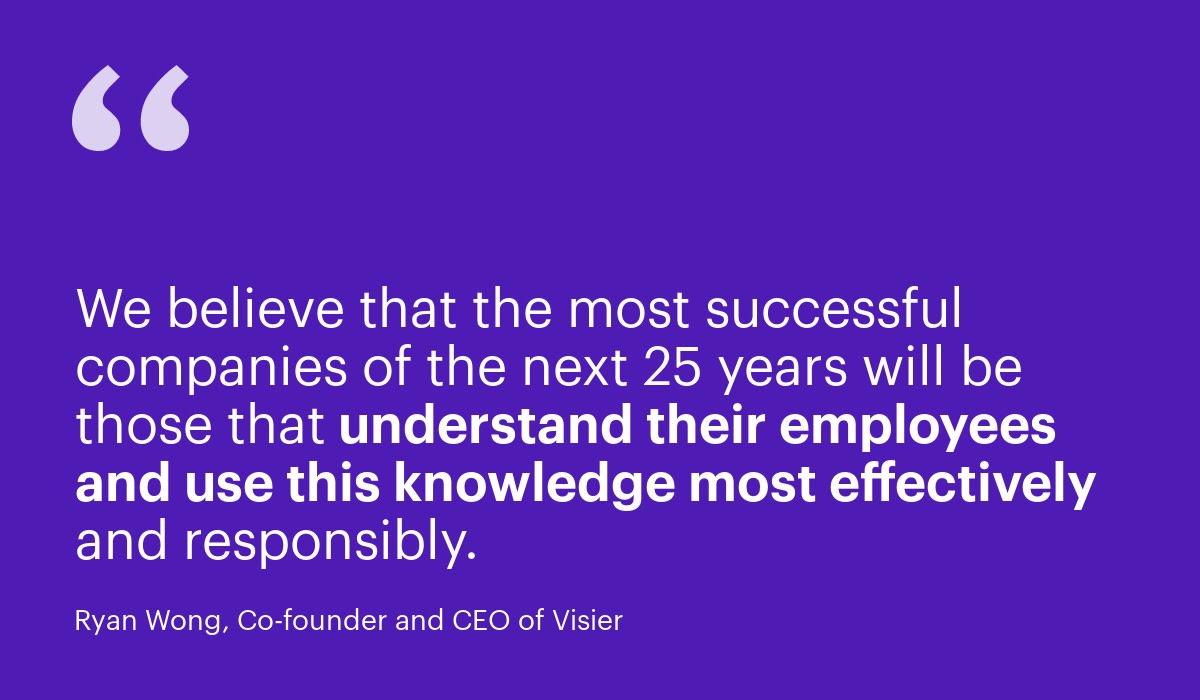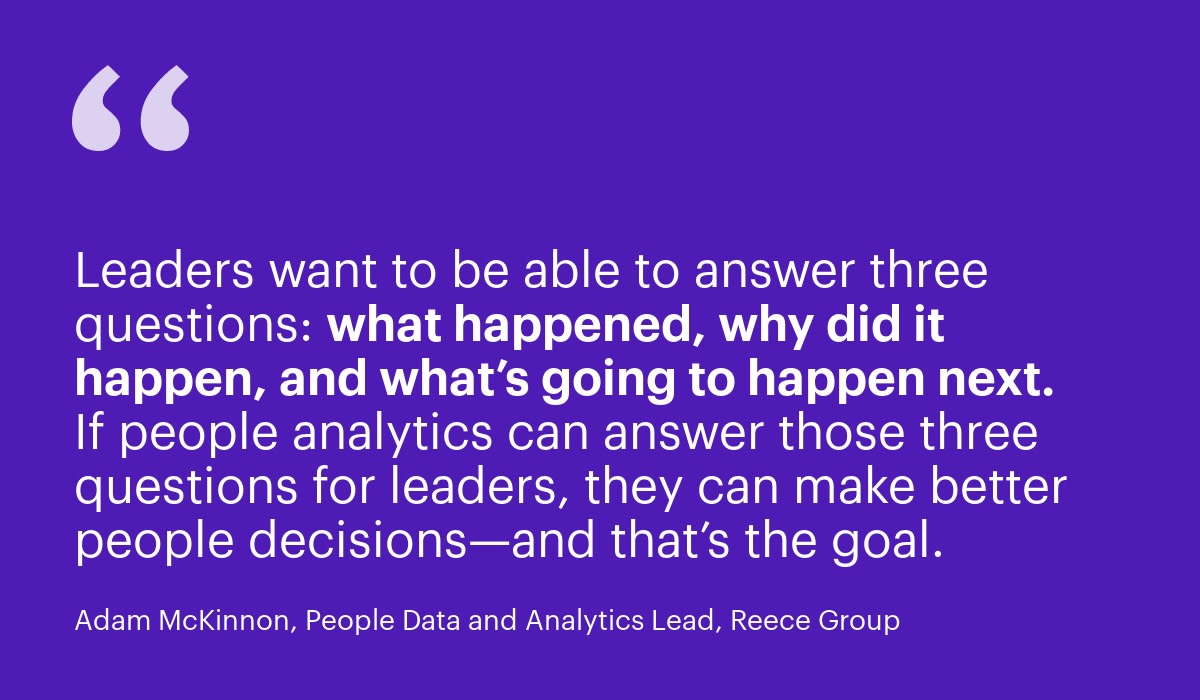Prepare for 2023: 10 HR Trends in the Workplace
Visier outlines emerging HR trends in the workplace for 2023, a year where people-centric businesses and their employees impact each other. Read more.

The last 25 years have been dominated by a focus on marketing and the customer. The next 25 years will be similarly consumed by HR, organizations, and the employee—how to acquire employees, how to retain employees, and how to maximize the value and impact they contribute to a business.
The workplace has fundamentally changed. So have the expectations between employers and employees—from where work happens, to how leaders develop and foster culture, to how business success is defined and workforce effectiveness is measured.
After three years of workplace upheaval, there’s no denying the impact that business has on employees, and employees have on business. 2023 could be the year the world starts to turn at a more regular rhythm. It’s a cautious exhale for many in HR, but not a time for any savvy business leaders to let their guard down. We face a recession, shifting political tides, and progressing climate disasters—the impacts of which are severe.
These 10 workplace trends will help people-centric business leaders and their employees prepare for what’s to come in 2023—and beyond.

Brace for mutual impact
In many industries, the last 25 years have been marked by a dedicated focus on the customer. The next 25 years will be similarly consumed by the employee—how to acquire them, how to keep them, and how to maximize the value they contribute to a business.
The most successful companies of the next 25 years will be those that understand their employees and use this knowledge most effectively and responsibly. Here’s a sneak peak at a few of the top trends in the workplace that will change the way people-centric businesses and their employees impact each other in 2023.

Trend 1: Finding company culture in hybrid work
The pandemic abruptly forced organizations and leadership to confront their long-standing positions about in-office work. Once employees proved productivity and effectiveness working remotely, everything changed. So, how can organizations evenly spread company culture from the office to working from home to hybrid work?
Hybrid work is the new normal. Companies that seek to strike the right balance between the benefits of person-to-person interaction and collaboration while accommodating an employee preference for flexibility and work-life balance will foster employee engagement and longevity. The approach will be unique to every company—what’s most important is that leaders are deliberate about defining the culture they want to create in the business and the impact they want it to have on employees.

Trend 2: A fresh balance between employee resignation and employee retention
Companies are currently in a push-and-pull pattern with employees as they attempt to pull them back to the office, and they’re facing the threat of resignations—or, actual resignations. With so many employees quitting for so many different reasons—and at so many different levels of tenure—blanket retention tactics simply aren’t going to cut it in 2023.
Businesses make significant investments in staffing, and the business impact of that investment continues to grow over time, making employee resignations even more costly. The average cost to replace an employee is 2x their salary, up to $100,000. Companies can’t afford high resignation rates, but resignations will continue to happen. Handling this cost means paying equal attention to both resignation costs, and retention costs—and their balance is absolutely vital to business success, growth, and longevity.
Instead of focusing solely on the necessity of reducing employee turnover—especially among key employees—prioritize practices aimed at boosting employee retention to thrive.

Trend 3: Lack of data insights gets costly
The People Impact Gap is the chasm between the business outcomes executives care about and the talent and skills necessary to produce those results. At the root of this gap is a disconnection—and the cost is incredibly high. Some executives will attempt to span it by restructuring HR, but savvy organizations are focusing on another key element: adopting people analytics to realize the impact people have on the business.
As we continue to confront the global challenges ahead, business and people leaders need to be prepared to make complex decisions that will ultimately impact people and business outcomes on multiple levels. And they need to be prepared to do so with confidence. People analytics turn valuable people data into actionable insights that yields better financial performance.
When the right business leaders understand the power of people analytics and are in lockstep about how to use people data and insights, leadership is poised to strategically and effectively define expectations and execute to meet key business goals. When people managers have focused, actionable information, they’re enabled to be more effective managers by making evidence-based decisions with confidence, having better conversations with their teams, and aligning their actions to the broader needs of the business.
Prepare for what’s next in 2023
Download the full report to learn about the 10 trends that will help people-centric leaders in 2023. It will provide you with a more in-depth look at the workplace challenges to expect, how to move past them, best practices to follow in response, and learnings from fellow HR leaders.



